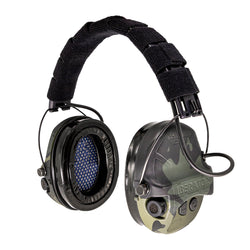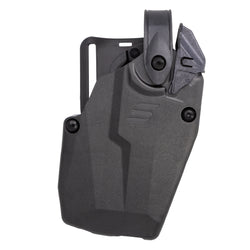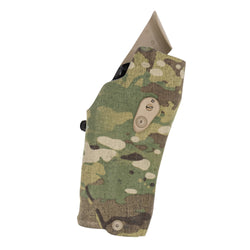Do you know how to respond to a car attack? Carjackings happen every day. Have you thought about it? Perhaps, but you may not have all the information you need to properly visualize and prepare for such a scenario.
In the video below, Safariland Cadre Rich Graham discusses a few basic considerations to make us aware of just what we might be facing, even if we’re armed, which, of course, we should be.

Basic Car Attack Precautions
We all know that the best fight is the one in which you never engage in the first place. We can take simple steps to avoid a bad situation, even in our vehicles. Precautions like locking your doors, checking your mirrors while stopped, leaving space between you and the car in front of you at traffic lights or stop signs, not lingering in your parked car, or at least being aware of your surroundings.
These precautions can create opportunities for what Graham says is “the number one thing you can do, when it comes to vehicle combatives,” which is “to drive.” Just drive away. Or, as Graham puts it, “maneuver off the X so we can get away.” But if you’ve been boxed in or cannot leave the scene for some other reason, you’ll need to understand what you’re facing, and it’s not just the bad guy.

Physical Realities of a Car Attack
Graham assesses the predicament like this: “I can’t drive, I can’t get away, and now I’m stuck in this metal box and I have to deal with the situation.”
The first thing to understand is why being stationary in a vehicle is so dangerous. First, this isn’t the movies. Car doors do not stop bullets. But car doors and windows can and will deflect bullets, and you need to understand how that phenomenon works.
Speaking from a sniper’s perspective, Graham says that he wants his target to be within three feet of any obstacle through which he has to shoot. As we noted, car doors and window glass will alter a bullet’s path. You can predict that path, to a certain degree, based on the obstacle’s angle, relative to the shooter.

If the target is within those three feet, the deflection will likely not be so severe as to cause the bullet to miss. After three feet, the hit probability goes way down as the bullet’s deflected trajectory increases from the deflecting obstacle.
The obstacle’s angle matters. Let’s use a car windshield as an example. A bullet fired from outside the vehicle, through the windshield, will deflect upward. If you slow it down in your mind, you can understand why. The windshield’s slope causes the bullet’s bottom edge to impact a fraction of a second before the tip, causing an upward deflection. Likewise, a bullet fired through the same windshield from inside the vehicle will deflect downward because the bullet’s top edge will impact first.
Even side window glass, which is almost perpendicular, will affect a bullet’s trajectory. The three-foot rule still applies.

Applying Ballistic Information
Knowing how bullets behave when hitting an obstacle helps our decision-making process. The harsh reality is that, in a car attack, the outside assailant has a distinct advantage if the car can’t move. If he fires through the windshield or door, his target will be within, or least close to, three feet from the bullet’s initial impact. Furthermore, that target’s mobility is severely limited.
Conversely, if you’re shooting from inside a vehicle, chances are that your target will be beyond the three-foot line, reducing your chances of hitting him. The odds are further reduced by the fact that your target is mobile if he chooses to be.
Finally, shooting through vehicle glass causes a spiderweb effect, further degrading your visibility in what begins as a disadvantageous situation. You can hit an exterior attacker, but your odds are far lower than his are of hitting you. His target, after all, is pretty much stationary with limited visibility. He only needs to fire at the driver’s space.
Long story short, taking fire while sitting in a vehicle is a very bad place to be.

Car Attack Options
The options are simple, and only one is good. First, drive away if you can. That’s the good one. Failing that, the best thing to do is get out of the car. You must get off “the X” and give yourself some mobility. Finally, if you have no other choice, engage the assailant from the vehicle, with all the disadvantages that entails.
Do yourself a favor a watch this short video, which is the introduction to Graham’s vehicle combatives series. He breaks it down in a no-nonsense way and shows you what he’s talking about.











